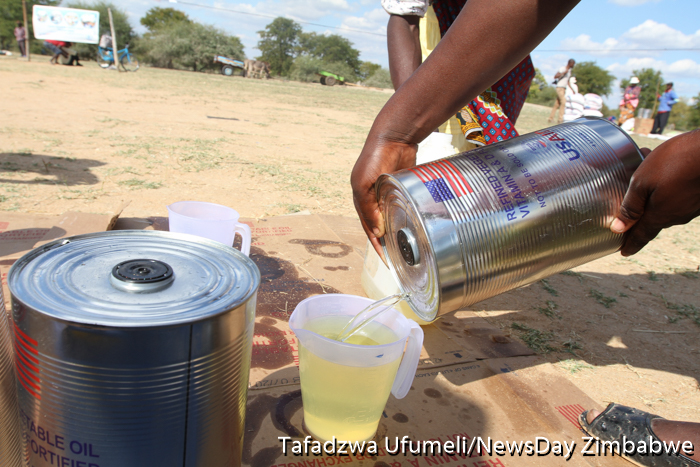
REPORT & IMAGES BY TAFADZWA UFUMELI

During the 2015 cycle, WFP completed Tsvimborume Weir Dam and garden, which are part of the productive asset creation programme.
The projects have changed many livelihoods in Tsvimborume area’s ward 5 and surrounding villages such as Risimati, Kugunga, Mutapwa, Tsumele, Mavange, Makotore, Duvai, Chitembere and Chigara.
The projects were identified through a community-based approach, as part of the community action plans designed by the community members.
A total of 592 households with a population of 2 239 and 7 773 livestock are now benefiting from the weir.
Currently, the water level of the weir is at about 92%, hence, the community is making full use of the water for domestic purposes, while livestock is also accessing drinking water.
- Chamisa under fire over US$120K donation
- Mavhunga puts DeMbare into Chibuku quarterfinals
- Pension funds bet on Cabora Bassa oilfields
- Councils defy govt fire tender directive
Keep Reading
Speaking to NewsDay during a field visit of the projects site, Ngwarirai Mapira said: “Our cattle, children and everyone is excited because of these projects, which are helping the communities survive and we continue to thank the WFP team for supporting our areas.”

The 2015/16 WFP’s productive asset creation programme targeted districts that have been perennially affected by shocks such as recurrent extreme weather events. A one hactare garden which is part of the productive asset programme project benefits more than 100 people.
The plot holders are divided into two groups of 50 and they have different days to water their crops. The beneficiaries also receive trainings on vegetable production, cropping calendar, record-keeping, as well as micro-finance.


“The rehabilitation of Tsvimborume Dam in Mwenezi, through the WFP’s programme last year continues to provide a vital source of water for the community, benefiting more than 2 200 people and 7 700 livestock. It also serves a nutrition garden created under the programme, allowing easy access to nutritious foods and a source of income for the community members,” WFP communications officer Sophia Robele said.

Pproductive asset creation activities only take place in the period following the harvest in April and are completed at the beginning of the agriculture season around November, to allow people time to work in their own fields.
Betilda Masvarimba, who is one of the beneficiaries of the programme, said she has been growing vegetables for her family through the project.
“I have been getting vegetables for my family from the garden and I did not have any night that me and my family slept without eating, comparing with the month’s when the project had not been completed,” she said.
The garden has beans, carrots, tomatoes, covo, king onions, rape and sugar loaf. Butternuts have already been harvested and one plot holder managed to get an average of 16 butternuts per 1,3ha bed. The harvested butternuts were being sold at $1 for 3 and $1 for 4 heads if small.
The beneficiaries also managed to harvest sugar beans at an average of 3,5 cups per 1,2ha bed.
WFP identified Mwenezi district in the southern belt of Zimbabwe to be one of the most affected by the impact of poor rainfall linked to El-Nino early in the season.
Mwenezi was found to be facing substantial reduction of agricultural production during the 2015/16 season, in particular of rainfed maize. According to the results of the Zimbabwe Vulnerability Assessment Committee’s 2015 rural livelihood survey, Mwenezi was one of the most food-insecure districts with an estimated prevalence of 31% at the peak of the 2015/16 lean season.
















